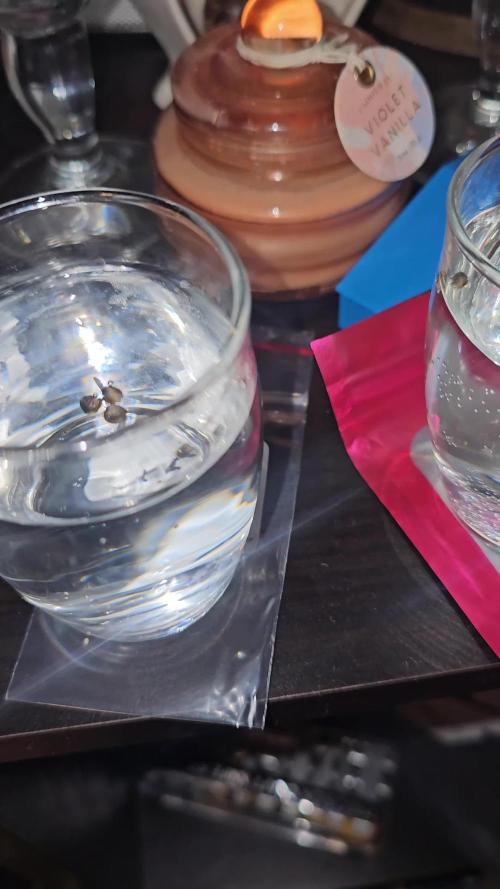The Grow Awards 2026 🏆 































Likes
Comments
Share


@SKUDUDUBAW
Follow
Tout s’est bien passé, je n’ai eu aucune carence durant tout le cycle. On odeur incroyable indescriptible. J’ajouterai les photos des buds plus tard
Likes
13
Share


@Prozak
Follow
to mutch cold here 2 week with low temps at night cicle betwen 12 &16 graus in europe.
maybe this is the reason of that purple orange colors (:
Likes
10
Share


@Bigbombbudz
Follow
Another week closer....
Well its coming to an end and the girls are going into there last 10 days, the flush will begin tomorrow, with 5 days of PH water with Sweet Raw added, then last 5 days straight PH Water.
It was a great crop, very easy to grow and no problems at all just feed and watch them grow.
Until next week, smoke a fatty, help out your fellow grower.
Likes
32
Share


@MadeInGermany
Follow
Info:
Unfortunately, I had to find out that my account is used for fake pages in social media.
I am only active here on growdiaries.
I am not on facebook instagram twitter etc All accounts except this one are fake.
Flowering day 64
since time change
to 12/12 h.
Hey guys :-)
The last days are numbered for the mini lady :-).
The coming days it will be in the darkroom for 48 hours before it is carefully trimmed by hand :-).
The week was two times poured with 1 l each.
The tent was cleaned and everything checked.
Have fun with the update and stay healthy 🙏🏻
You can buy this Strain at :
https://www.zamnesia.com/de/5165-zamnesia-seeds-kalini-asia-feminisiert.html
Type:
Kalini Asia
☝️🏼
Genetics:
Black Domina x Purple Kush
👍
Vega lamp:
2 x Todogrow Led
Quantum Board 100 W
💡
Bloom Lamp :
2 x Todogrow Led
Cxb 3590 COB 3500 K 205W
💡💡☝️🏼
Soil :
Canna Coco Professional +
☝️🏼
Fertilizer:
Green House Powder Feeding
☝️🏼🌱
Water:
Osmosis water mixed with normal water (24 hours stale that the chlorine evaporates) to 0.2 EC. Add Cal / Mag to 0.4 Ec Ph with Organic Ph - to 5.5 - 5.8 .
Likes
19
Share


@valiotoro
Follow
Hello everyone 👋
Week 8 of flower for the Banana Purple Punch auto from Fast Buds 🍌😈
She grew fast with a beautiful color,for the nutrient 4ml/L terra bloom & 1ml/L power buds & Green sensation 1ml/L from Plagron
Now only plain water 💧
All the top buds are ready for harvest
Likes
4
Share


@matias_scrog
Follow
Las puntas de varias hojas de la rainbow se han enrolado hacia arriba levemente, esta semana he regado con agua solamente, mañana pondré la mitad de la dosis de fertilizante. Gorilla ghost va increíblemente bien, los pistilos empezaron a madurar, esperando con ansias el día de la cosecha, pero sin apurarme!
Likes
22
Share


@valiotoro
Follow
Hello everyone 🤩🍓
´you're a slave to money then you die📻
she grew fast and with a beautiful green colour on the leaves!
She has responded superbly to low stress training & topping and seems didn't even notice 😎
Wish you all a good day and happy growing
Likes
18
Share


@BlueSmokeFarms
Follow
Bud sites are producing black/purple spot in leaves. Bud growth is producing as the days go by. Really excited with this being my first grow
Nitrogen boost really helped with the deficiencies. Plants are starting to look really heathy... Prunes lower colas that weren't stretching past the canopy and receiving energy so more energy can be used towards the top buds
Processing
Likes
55
Share


@CBD_Sweden
Follow
Week 19, day 6. Second week after switching to 12/12 lighting.
Nr 1 is 155 cm tall from top of soil and Nr 2 is 171 cm.
All video and pics is taken when the girls have hade 11.5 h of no lights and just got watered.
The stretch on these girls was incredible the past 2 weeks after switching to 12/12 lighting.
So fare this has gone smooth as silk and no problems at all despite temperatures over 30 degrees Celsius for the last 45 days.
I have manage the heat by having between 85-95 % of RH in the room all the time.
And this genetics from DinaFem seeds is awesome, i hope i will get a massive harvest of strong indica medicine.
Likes
16
Share


@Nookandplant42o
Follow
"great response to topping without problems or delay really a differentiated self in that term. done on 06/09 -
06/13 - with 4 glues visible already growing, I made LST to match they are growing in the same proportion.
robust plant with large, fat leaves, likes to be well fed, great in LST and Topping
Gorilla soil water ph 6.4 ppm 235
Cal-mag, clonex solution, bio grow, bio bloom, alg - a mic, myco chum.
Likes
44
Share


@Aedaone
Follow
The temperatures, humidity, height, and watering volume(if measured) in grow conditions are all averaged for the week. The pH is soil pH. Any watering done by me is well water which is 7.6 pH and 50° F. Coop Poop, Molasses, Feather Meal, and Soluble Kelp are ml/gallon of soil top dressed. Everything else listed in nutrients is ml/gallon of water fed to plants without checking the solution Ph.
Day 1 We had a high temperature of 89°F. Skies are clear and sunny, humidity is about 50%. I watered about 5 gallons.
Day 2 we had a high temperature of 78°F. Skies were clear and sunny. Humidity was mid 50%'s. I watered about 4 gallons each pot.
Day 3 was cooler. We had a high temperature of 70°F. Skies were sunny and humidity was around 59%. I took advantage of the low humidity and washed the plants in bio fungicide and I clean up some powdery mildew in the leaves. I watered about 4 gallons.
Day 4 we had a high temperature of 72°F. It was very sunny and the air was dry. I watered about 4 gallons per pot.
Day 5 we had a high temperature of 76°F. It was a perfect day for cannabis. Low humidity and I watered about 4 gallons
Day 6 we had a high temperature of 81°. There was abundant sunshine. I watered about 5 gallons per pot. The girls are loving the weather.
Day 7 we had a high temperature of 84°F. Abundant sunshine low humidity and I watered about 4 gallons.
Overall this week was a success. The weather is finally cooperating. These girls are on cruise control getting ready for their ripening phase.
Likes
459
Share


@Ju_Bps
Follow
Hello my friends 👩🌾👨🌾,
This 8th flowering week was good 👊, maturation Buds continue 🌲❄️, I thought it will be the last week, but need one more.
The end is for this week end I think, for moment trichromes not really full milky, and I like something like 20% amber.
I've started flush with flash cleaner
The senesence is started on the #2 and #3.
💦 1 Watering this week 1.8l/plant .
Water + flash cleaner
PH@6
Lamp @100%
Thanks community for follow, likes, comments, always a pleasure 👩🌾👨🌾❤️🌲
See you next week 👊👊
Mars Hydro - TS 1000
https://www.mars-hydro.com/ts-1000-led-grow-light
Mars Hydro - FC3000
https://www.mars-hydro.com/fc-3000-samsung-lm301b-led-grow-light
Mars Hydro - SP3000
https://www.mars-hydro.com/sp-3000-samsung-lm301b-greenhouse-led-grow-light
The High Chameleon - Vannila T
https://www.thehighchameleon.com/shop/vanilla-t-5
Likes
3
Share


@Scrubbyjimbob
Follow
My 3 week estimate last week might be a little long. Thinking 1 more week maybe. It's going cloudy pretty quick. We'll see how the week goes.
Tried to clean up a little more between branches today but the canopy is pretty ridiculous for only 3 plants(really two and a half since #2 got a little stunted from the early root rot). I really should have been more aggressive skirting out the lesser undergrowth. I left it because it managed to stretch to canopy level but it's really choked up some areas. Buds are basically laying on one another when you get deeper in. Gonna be plenty of fluff for extracts.
Likes
12
Share


@DrShotzUK
Follow
GORILLA PUNCH -420 FAST BUDS week 7
Such a nice smelling strain, been easy to grow without any issues so far, responds well to lollypopping technique..
Will use 420 fast buds for sure again.
DRSHOTZUK
Likes
Comments
Share


@Thelocalnursury
Follow
First week of germination. I requested a batch of seeds in hopes of submitting for the American Cup. I know I came close with the germination date. I was busy this summer, so I was only free halfway through October.
Likes
90
Share


@MrCOCO
Follow
Hi... Everything goes very fast ... I used the pinching method to increase my yield and the quality of buds also... 🍃🍃🍃now I keep my fingers crossed for the girls ...🍃🍃🍃 I think maybe a week and I will switch to flowering... 🍃🍃🍃
Happy growing 🍃🍃🍃






















